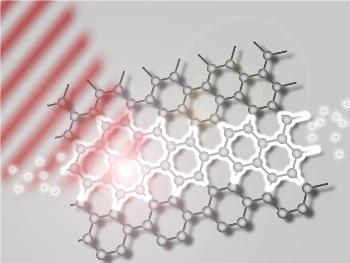Scientists at the Vienna University of Technology (TU Vienna) designed light-detectors from graphene and analyzed their special features. Scientists at the TU Vienna are closely studying graphene’s optical and electronic properties. They showed that remarkably fast conversion of light into electrical signals is possible using graphene, which could enhance data exchange between systems considerably.
Alexander Urich explained that light detectors made from graphene could convert light into electronic signals at a faster rate than detectors made from other materials. He examined graphene’s optical and electronic properties in collaboration with Professor Karl Unterrainer and Thomas Müller at TU Vienna.
 Graphene Light makes the electrons flow
Graphene Light makes the electrons flow
Last year, the scientists had proved that graphene can convert light into electronic signals at a fast rate, but the material’s reaction time could not be calculated. Due to the extremely fast conversion, it was not possible to measure the photoelectric effect in graphene using normal techniques. The graphene detector was subjected to laser pulses continually and the photo-current thus obtained was determined. The maximum frequency of the detector can be measured by varying the delay in time between the laser pulses. Using this method, the graphene photo-detectors can be used to transfer data at the rate of 30 GB/s or above. The result clearly proves the astonishing ability of graphene and its use for optoelectronic applications.
Graphene-photodetectors can function at high frequencies owing to the short lifetime of graphene’s charge carriers. The electrons, which are moved from their fixed arrangement settles down at another permanent position after a few picoseconds, thus resulting in an electrical current. Following this, the graphene photodetector is subjected to another light signal which introduces new electrons, thus producing the next electrical signal.
The rapid reaction time is another remarkable property offered by graphene. Charge carriers in graphene can cover long distances effectively. Unlike normal semiconductors, it can also absorb light from infrared to visible light. In addition, graphene offers a high breaking strength and is a very good conductor of heat.